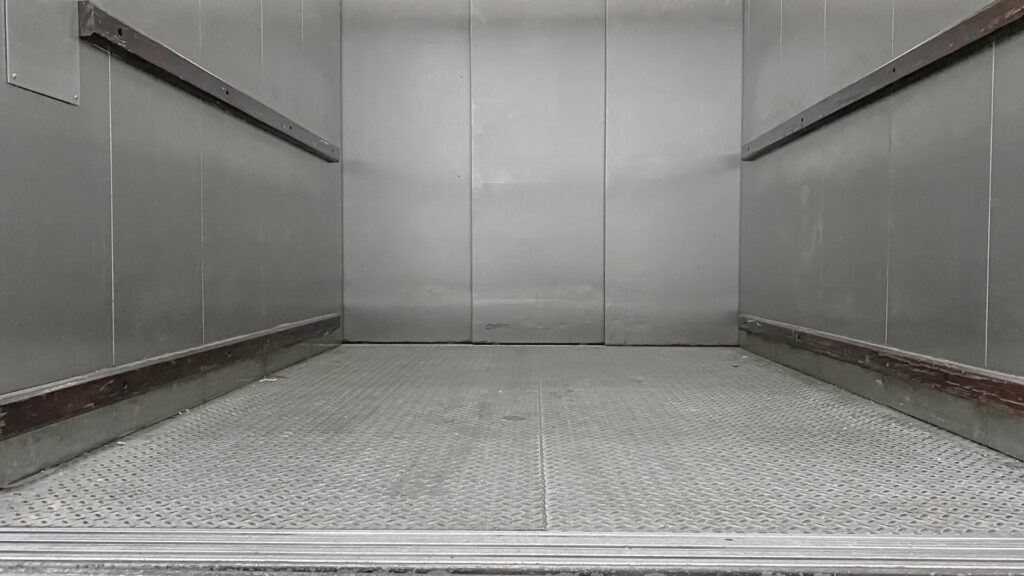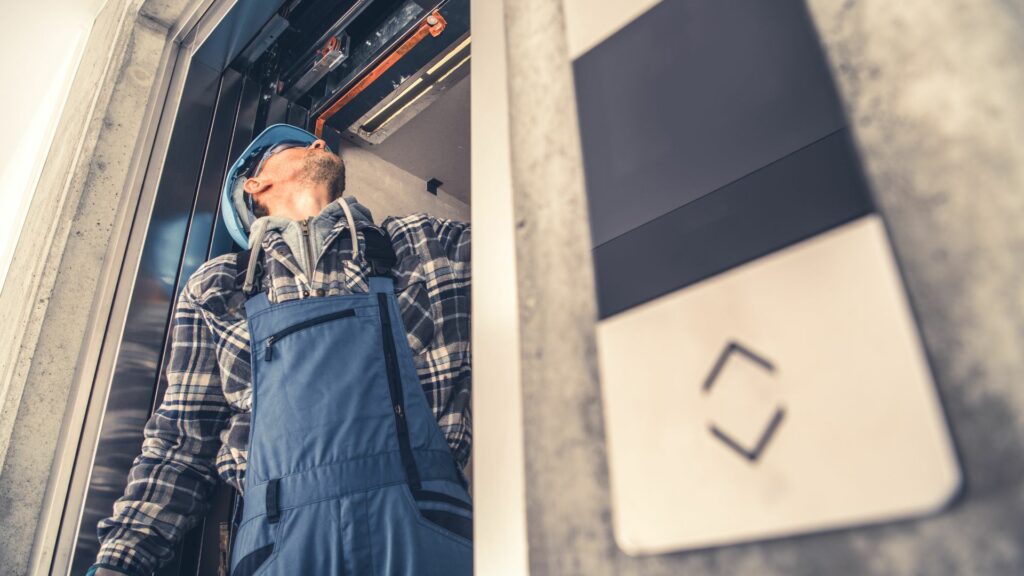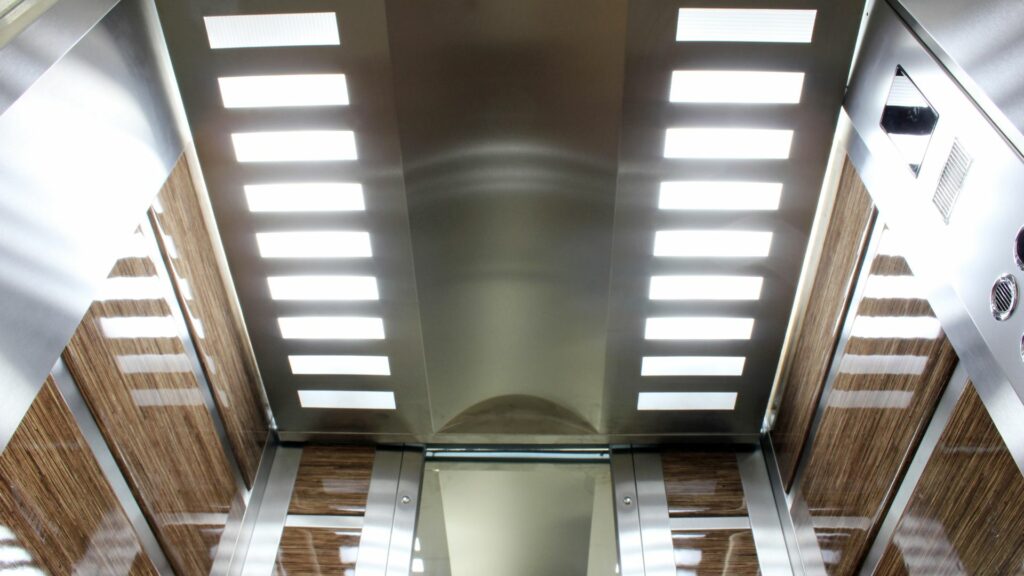Is your old service elevator slowing down operations and causing safety concerns? According to recent studies, upgrading an outdated service elevator can improve efficiency by up to 30%.
This blog post will explore the numerous benefits of modernizing your service elevator, from enhanced safety features to increased speed and capacity. Discover how a simple upgrade can revolutionize your building’s operations and provide a better experience for both employees and visitors.
Key Takeaways
- Upgrading an outdated service elevator can improve efficiency by up to 30%, enhance safety features, and increase speed and capacity.
- Freight elevators transport heavy loads in industrial settings, while service elevators are used for moving people and smaller items in commercial buildings. Upgrading service elevators improves efficiency, safety for employees, and adds versatile capabilities.
- When upgrading a service elevator, ensure compliance with ASME and ANSI safety standards and regulations, consider accessibility features like Braille signage and wheelchair-accessible controls, and explore modernization options such as control system upgrades, cab interior refreshes, and energy-saving features.
Understanding the Difference Between Freight Elevators and Service Elevators

# Understanding the Difference Between Freight Elevators and Service Elevators
Freight elevators and service elevators are two distinct types of vertical transportation systems used in commercial and industrial buildings. While freight elevators are designed to transport heavy loads and bulky items, service elevators are intended for the movement of personnel and smaller items within a building.
Definition of each type
Freight elevators and service elevators serve different purposes in commercial and industrial buildings. Freight elevators are designed to transport heavy loads, such as large equipment, machinery, and pallets of goods, between floors in warehouses, factories, and other industrial facilities.
These elevators have higher weight capacities, larger dimensions, and more durable construction to withstand the rigors of heavy use.
Service elevators, on the other hand, are primarily used for transporting people and smaller loads within a building. They are commonly found in hotels, hospitals, office buildings, and other multi-story structures.
Key features and dimensions
Understanding the key features and dimensions of freight and service elevators is crucial for commercial property managers and industrial facility owners considering an upgrade. Here’s a comparative look in an HTML table format:
| Elevator Type | Key Features | Dimensions |
|---|---|---|
| Freight Elevator | Designed for heavy loads, often equipped with double doors for easy loading and unloading, have higher weight capacities. | Larger dimensions to accommodate industrial and commercial goods, dimensions vary based on design and usage needs. |
| Service Elevator | Primarily used for passenger transportation and moving smaller goods, typically feature single doors, focused on passenger safety and convenience. | Smaller dimensions than freight elevators, tailored to fit within commercial buildings while providing efficient service. |
This table highlights the distinct features and dimensions of freight versus service elevators, guiding commercial property managers and industrial facility owners in making informed decisions about upgrading their service elevators.
Applications of freight elevators
Freight elevators are versatile and essential for various industries. They are designed to handle heavy loads and facilitate smooth operations in different settings. Here are some common applications of freight elevators:
- Warehouses and distribution centers: Freight elevators are used to transport goods, materials, and equipment between different levels of the facility, streamlining the storage and retrieval process.
- Manufacturing plants: In industrial settings, freight elevators are employed to move raw materials, finished products, and machinery, ensuring efficient production workflows.
- Retail stores and shopping malls: Large retail establishments utilize freight elevators to transport merchandise from loading docks to storage areas and sales floors, keeping shelves well-stocked.
- Hotels and resorts: Freight elevators are used to transport luggage, housekeeping supplies, and food service items, ensuring smooth operations behind the scenes.
- Hospitals and healthcare facilities: Medical equipment, supplies, and waste materials are transported using freight elevators, maintaining a clean and organized environment.
- Construction sites: During the construction phase, freight elevators are used to move building materials, tools, and equipment, facilitating efficient project progress.
- Automotive dealerships: Freight elevators are employed to transport vehicles between different levels of the dealership, simplifying the process of moving cars for display or service.
- Airports and transportation hubs: Freight elevators are used to move luggage, cargo, and supplies, ensuring seamless operations in these high-traffic environments.
Benefits of Upgrading Your Old Service Elevator

Upgrading your old service elevator can bring numerous benefits to your commercial property or industrial facility. Improved efficiency, increased safety, and more versatile capabilities are just a few of the advantages you can expect when modernizing your service elevator.
Improved efficiency and speed
Upgrading your old service elevator offers significant improvements in efficiency and speed. Modern service elevators feature advanced technology and optimized designs that enable faster and smoother transportation of goods and people within your building.
These enhancements reduce wait times, minimize delays, and streamline vertical movement, resulting in a more efficient flow of materials and personnel.
Increased efficiency and speed directly impact the productivity of your commercial property or industrial facility. By upgrading your service elevator, you can expect quicker delivery of supplies, more efficient movement of employees between floors, and reduced bottlenecks in high-traffic areas.
Increased safety for employees
In addition to improving efficiency, upgrading your old service elevator can significantly enhance the safety of your employees. By modernizing your elevator system, you can incorporate advanced safety features such as emergency stop buttons, interlocks, and door sensors, which help prevent accidents and protect workers from potential hazards.
These safety upgrades ensure that your employees can perform their duties with greater peace of mind, knowing that their well-being is a top priority.
Investing in a service elevator upgrade also demonstrates your commitment to maintaining a safe work environment. Regular maintenance and modernization of old elevators reduce the risk of malfunctions and breakdowns that could endanger your staff.
More versatile capabilities
Upgrading an old service elevator can significantly expand its capabilities and functionality. Modern service elevators are designed to handle a wide range of tasks beyond simple vertical transportation, such as efficiently moving heavy equipment, bulky furniture, and large quantities of goods between floors.
These advanced systems often feature larger cab sizes, higher weight capacities, and more durable construction materials, allowing them to accommodate diverse cargo and withstand frequent use in demanding environments.
Moreover, upgraded service elevators can be equipped with advanced control systems and user-friendly interfaces, enabling precise floor selection, smooth acceleration and deceleration, and even the ability to prioritize certain types of traffic.
These enhanced features not only streamline day-to-day operations but also contribute to increased productivity and reduced downtime. By investing in a versatile, modern service elevator, commercial property managers and industrial facility owners can ensure their buildings are well-equipped to handle the evolving needs of their tenants and operations.
Factors to Consider When Upgrading Your Service Elevator

Upgrading your service elevator requires careful consideration of various factors to ensure a smooth and successful modernization process, including compliance with safety standards, accessibility requirements, and selecting the right modernization options for your specific needs.
Compliance with safety standards and regulations
Ensuring compliance with safety standards and regulations is a critical factor when upgrading your service elevator. The Murphy Elevator Company specializes in modernizing service elevators while adhering to all relevant safety codes and guidelines.
Their expert team stays up-to-date with the latest industry standards, such as those set by the American Society of Mechanical Engineers (ASME) and the American National Standards Institute (ANSI), to guarantee that your upgraded elevator meets or exceeds all safety requirements.
Upgrading your service elevator with The Murphy Elevator Company not only enhances its performance and functionality but also provides peace of mind knowing that your elevator is safe and compliant.
Their technicians meticulously assess your existing elevator, identify any potential safety hazards, and develop a customized modernization plan that addresses these issues while incorporating the latest safety features.
Accessibility considerations
After ensuring compliance with safety standards and regulations, it’s crucial to consider accessibility when upgrading your service elevator. An accessible elevator provides equal access for all individuals, regardless of their physical abilities.
Incorporating features such as Braille signage, audible floor announcements, and wheelchair-accessible controls can significantly improve the user experience for those with visual, auditory, or mobility impairments.
Moreover, upgrading your service elevator to meet current accessibility standards not only creates a more inclusive environment but also enhances the overall value and appeal of your property.
Modernization options
After considering accessibility, it’s essential to explore the various modernization options available for upgrading your old service elevator. Murphy Elevator Company offers a range of solutions to enhance the performance and functionality of your elevator system.
Modernization options for upgrading your service elevator include:
- Control system upgrades: Replacing outdated control systems with advanced microprocessor-based controllers can improve the responsiveness, reliability, and energy efficiency of your elevator.
- Drive system upgrades: Upgrading to modern AC or DC drive systems can provide smoother, quieter operation and reduce energy consumption.
- Door operator upgrades: Installing new, high-performance door operators can enhance the safety and efficiency of your elevator, minimizing door-related issues and reducing maintenance requirements.
- Cab interior upgrades: Refreshing the cab interior with new finishes, lighting, and fixtures can create a more welcoming and professional atmosphere for passengers.
- Safety system upgrades: Ensuring your elevator meets current safety standards by upgrading components such as emergency brakes, governors, and safety switches.
- Communication system upgrades: Integrating modern communication systems, including emergency phones, intercoms, and digital displays, can improve passenger safety and convenience.
- Energy-saving features: Implementing energy-efficient solutions like regenerative drives, LED lighting, and sleep mode can significantly reduce your elevator’s operating costs and environmental impact.
Why Choose Murphy for Your Service Elevator Upgrade
Murphy Elevator offers superior quality and design in their service elevator upgrades. They provide customization options to meet your specific needs.
Customization options
Murphy Elevator Company understands that every building has unique needs and requirements. That’s why they offer a wide range of customization options for service elevator upgrades.
From cab interiors and fixtures to control systems and safety features, their team works closely with clients to create a tailored solution that meets their specific needs and preferences.
Whether you need to accommodate larger loads, improve accessibility, or enhance the overall aesthetic of your service elevator, Murphy Elevator Company has the expertise and flexibility to deliver.
Their experienced engineers and technicians use state-of-the-art technology and high-quality materials to ensure that your upgraded service elevator is reliable, efficient, and built to last.
The Benefits Of Upgrading Your Old Service Elevator Conclusion
Upgrading your old service elevator offers numerous benefits that can vastly improve your building’s efficiency, safety, and overall value. By modernizing your elevator, you can enhance its performance, reduce maintenance costs, and provide a better experience for occupants and visitors alike.
Upgraded elevators also come with advanced features and technologies that improve user experience and comply with updated safety regulations. Investing in an elevator upgrade not only extends its lifespan but also adds value to your property, making it more attractive to potential tenants or buyers.
Take the first step towards a more efficient and secure building by upgrading your old service elevator today.
Service Elevator (FAQs)
1. What are the benefits of upgrading an old service elevator?
Upgrading an old service elevator can improve safety, reliability, energy efficiency, and overall performance.
2. How can upgrading an old service elevator improve safety?
Upgrading an old service elevator with modern safety features like emergency brakes, door sensors, and fire-rated doors can significantly enhance passenger and operator safety.
3. Can upgrading an old service elevator save money in the long run?
Yes, upgrading an old service elevator can lead to long-term cost savings through improved energy efficiency and reduced maintenance needs.
4. Will upgrading an old service elevator increase its load capacity?
Upgrading an old service elevator can potentially increase its load capacity, depending on the specific upgrades made and the elevator’s original design.
5. How long does it typically take to upgrade an old service elevator?
The time required to upgrade an old service elevator varies depending on the extent of the upgrades and the elevator’s condition, but it usually takes several weeks to a few months.